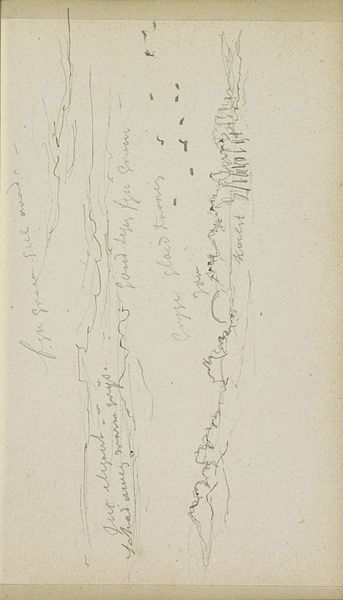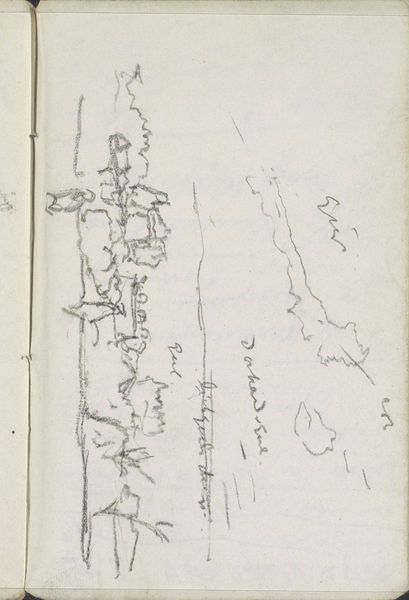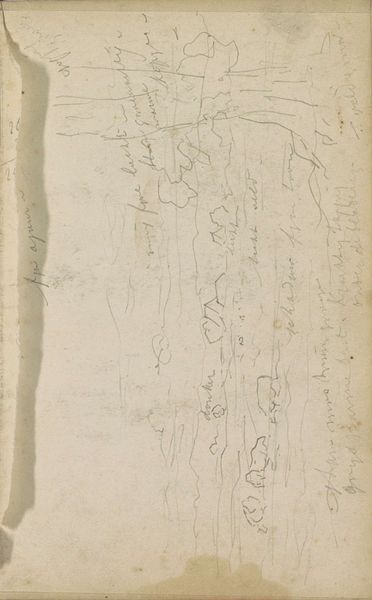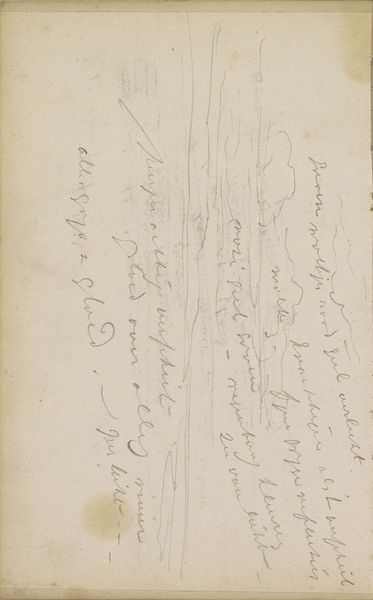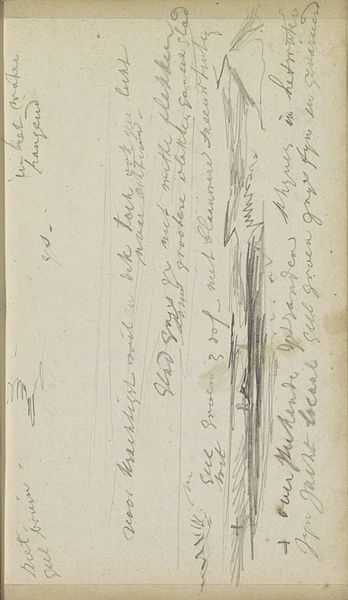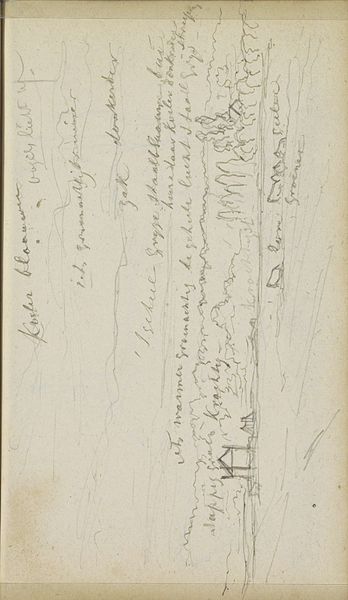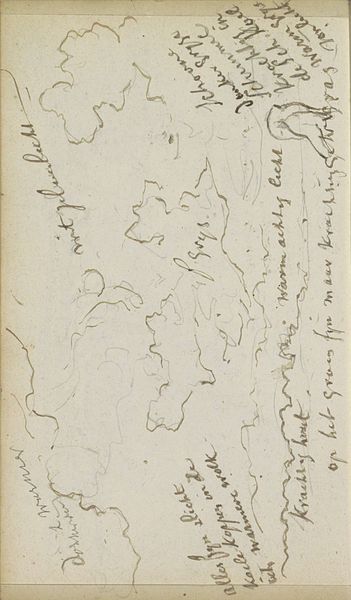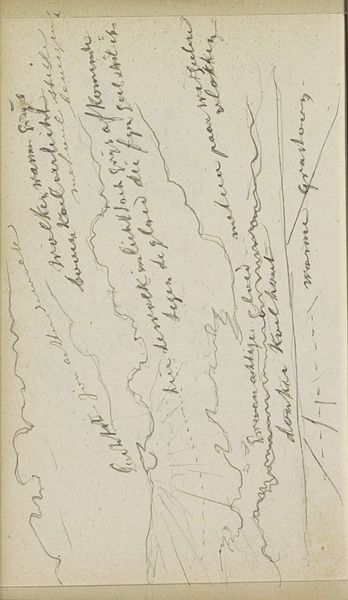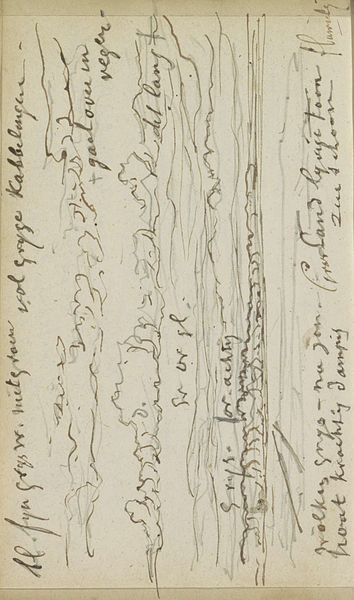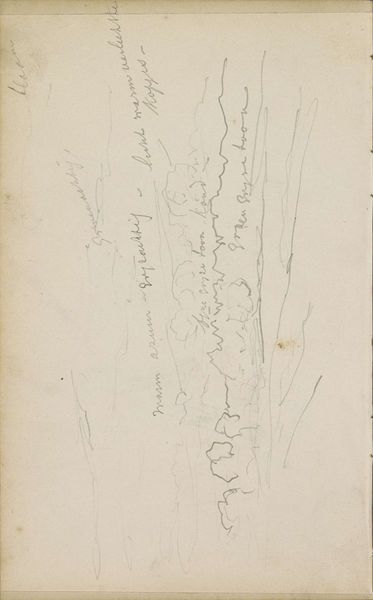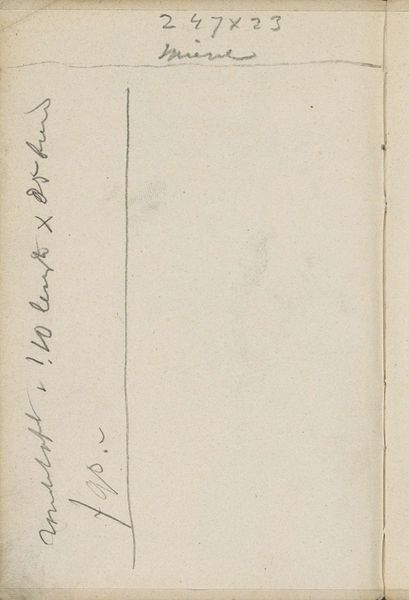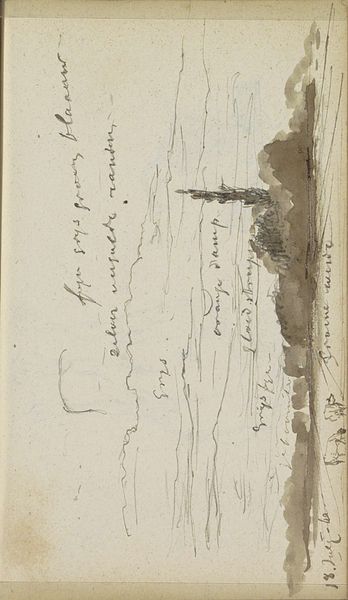
Berglandschap gezien vanuit een boot op het Bodenmeer 1858 - 1859
0:00
0:00
#
amateur sketch
#
lake
#
light pencil work
#
pen sketch
#
pencil sketch
#
incomplete sketchy
#
personal sketchbook
#
ink drawing experimentation
#
pen-ink sketch
#
mountain
#
sketchbook drawing
#
watercolor
Copyright: Rijks Museum: Open Domain
Curator: Today, we're looking at "Berglandschap gezien vanuit een boot op het Bodenmeer," or "Mountain Landscape Seen from a Boat on Lake Constance," a pen and ink sketch made around 1858-1859 by Johannes Tavenraat, now held in the Rijksmuseum. Editor: My first impression is its airy quality; despite being a landscape, it feels very sparse, almost abstract. The lines are so light, it barely feels like it's there. What kind of paper is this on, and what pens would someone even have used in the mid-19th century for something like this? Curator: The support is likely paper from a sketchbook, meant for quick impressions, not a finished work. The lines do look experimental. If you look closely, you see he included written observations in the bottom and along the side, almost like he's experimenting with combining text and image directly. His annotations reflect local atmospheric conditions. Editor: Absolutely. I immediately gravitated towards the text! The watery reflections and mountainous forms seem secondary to the notations – these written words create an inventory of fleeting moments and emotional observations. To me the imagery represents both the imposing mountains in nature contrasted by the feeling of freedom conveyed by the light. There are tiny figures; their inclusion underscores the sheer scale and emotional impact of such vistas and open water. Curator: What's also key here is the role of the amateur artist. Tavenraat's sketch isn't striving for polished realism. Its worth lies in the immediacy, offering direct access to his working methods. Look at the layered materiality, where faint washes mix with bolder strokes. These choices underscore not just observation but the very act of making. Editor: I agree! Beyond the documentarian intent, the symbolist overtones linger, urging us to examine and value an intimate visual language between landscape, notation and emotive interpretation. Curator: So we’re left with this idea of landscape both physically rendered and materially considered; in essence, it’s the making that drives meaning. Editor: Exactly – for me it’s the image capturing what those mountain landscapes triggered psychologically in that specific moment through combined methods. It’s almost akin to an early form of automatic drawing that predates surrealism!
Comments
No comments
Be the first to comment and join the conversation on the ultimate creative platform.
